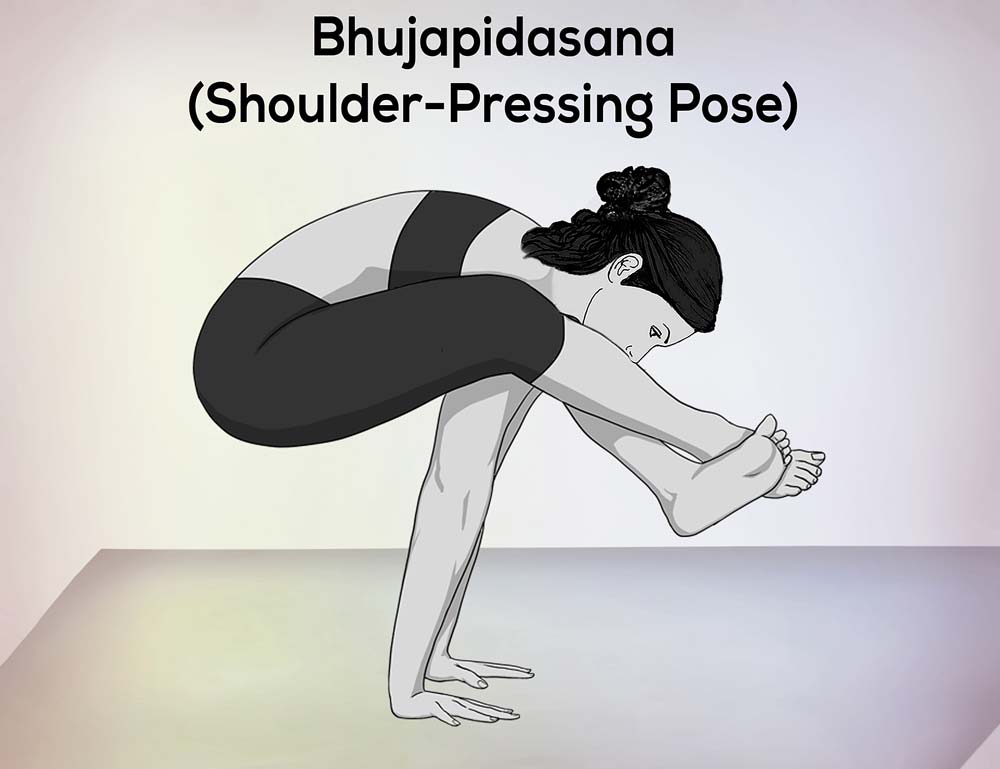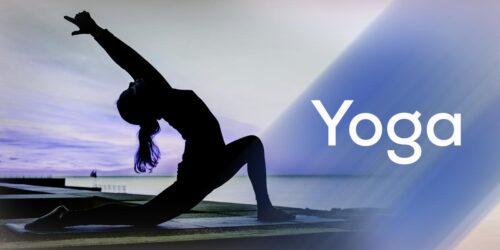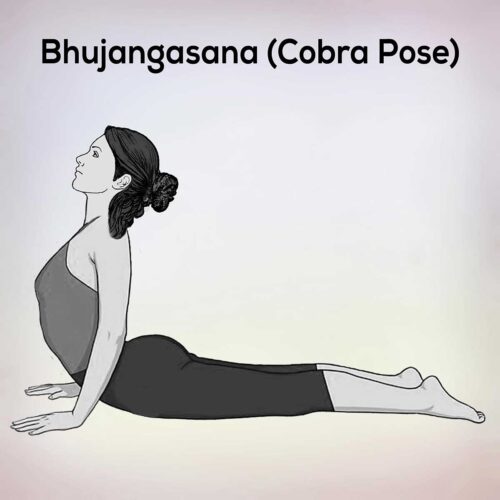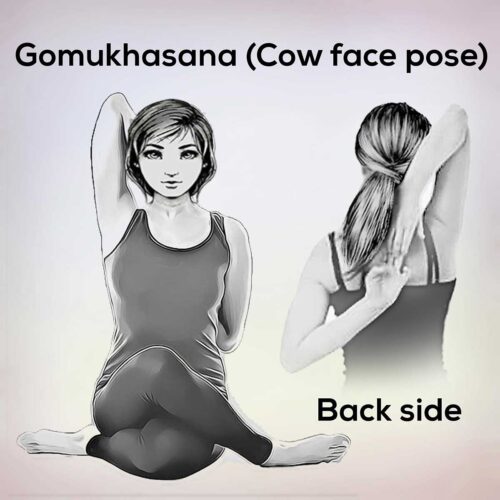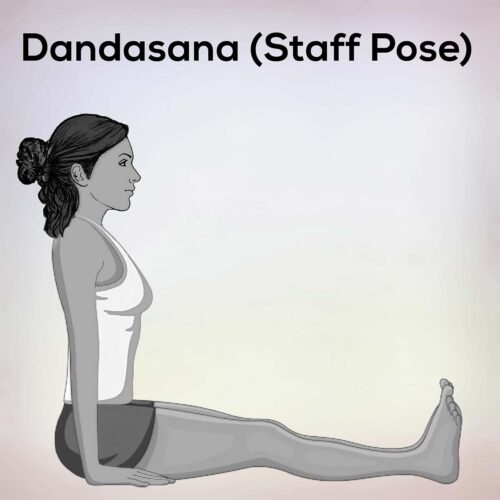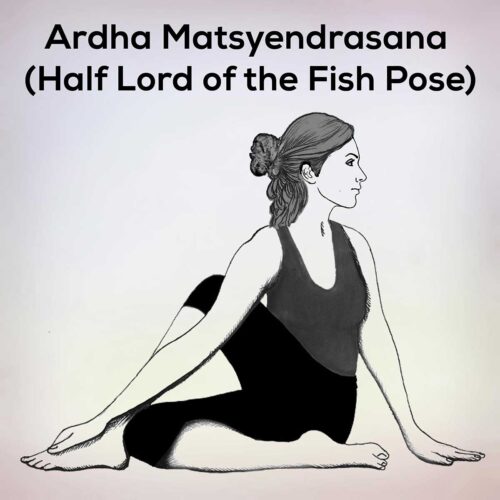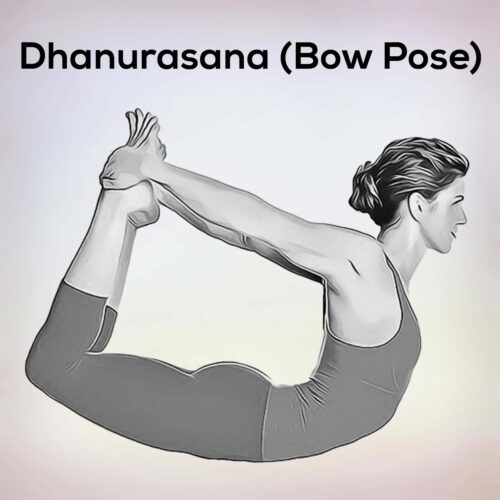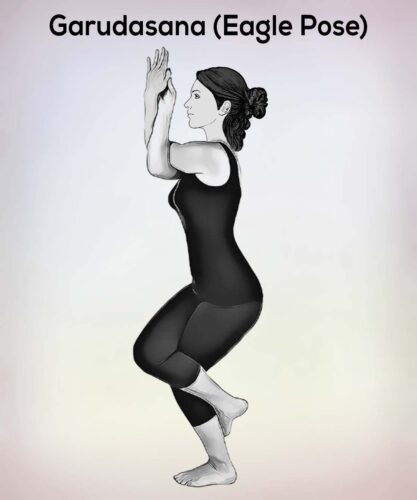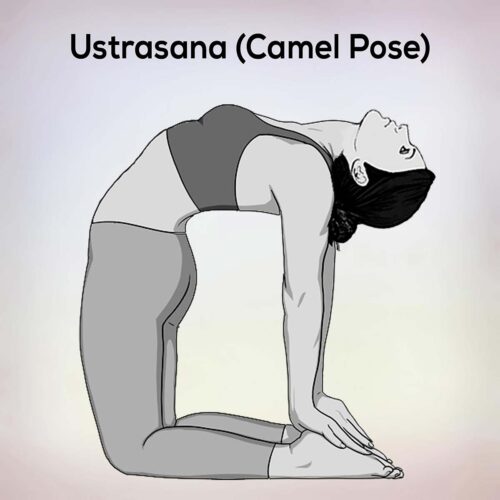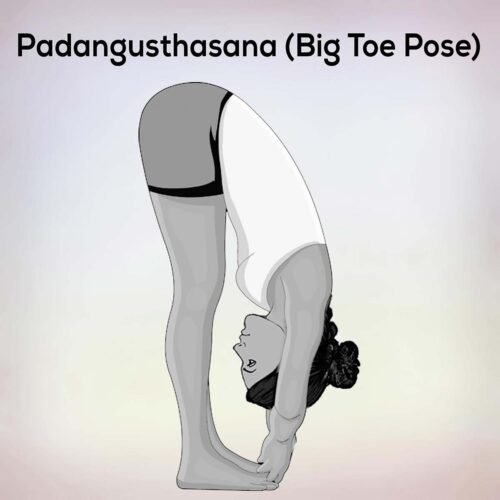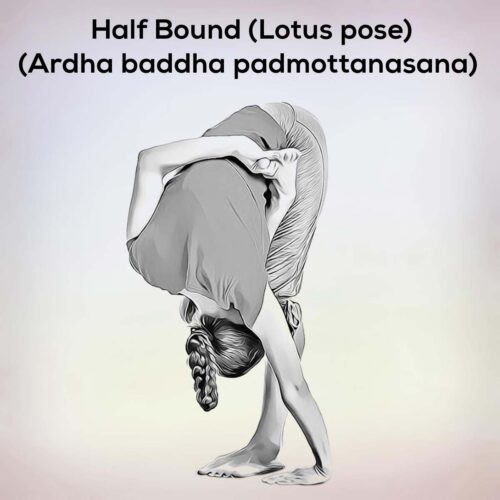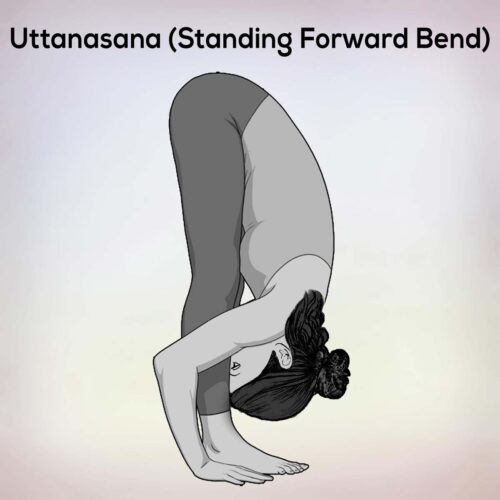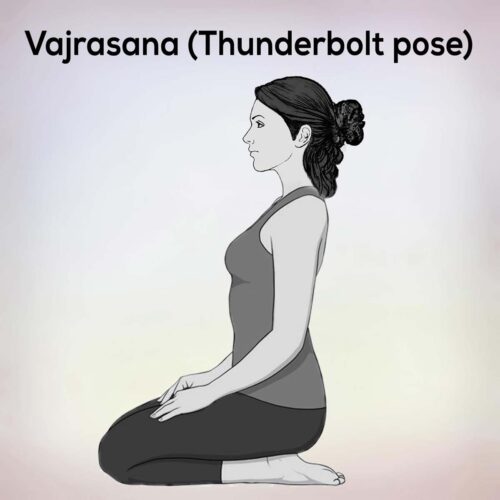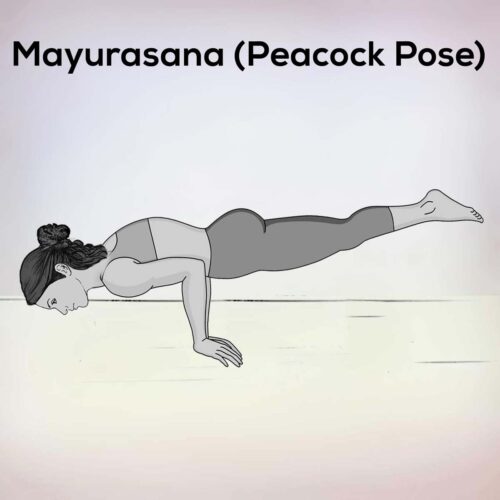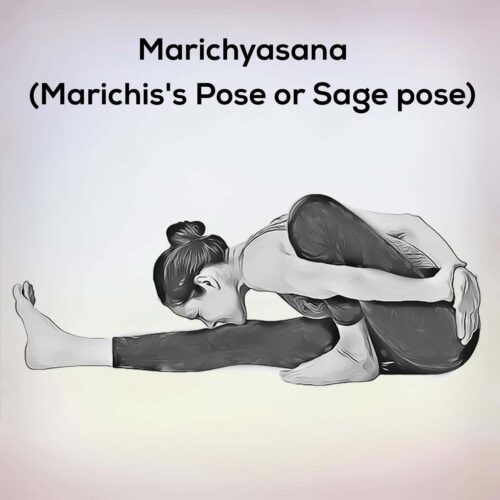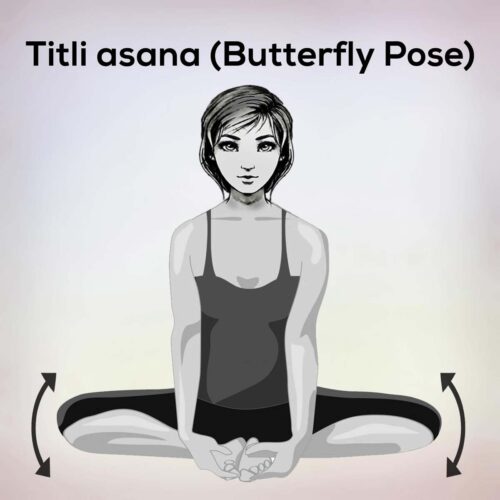Bhujapidasana | Shoulder-Pressing Pose Steps, Benefits, And Precautions
Bhujapidasana, also known as the Shoulder-Pressing Pose or Arm-Pressure Pose, is an intermediate yoga asana that challenges the practitioner’s strength, balance, and flexibility. It is part of the Ashtanga Vinyasa Yoga tradition and involves a combination of squatting, arm balancing, and core engagement.
This asana targets the main points in your body which are as follows: Hands, wrists, elbows, arms, shoulders, upper back, hips, and core.
The Level of Asana is Intermediate, so this article explains the benefits of Bhujapidasana (Shoulder-Pressing Pose or Arm-Pressure Pose) the right way to practice it. The precautions to be taken while practicing this asana are also discussed.
Let us know the steps of practicing Bhujapidasana (Shoulder-Pressing Pose or Arm-Pressure Pose) and its various benefits through this table of contents.
1)- Bhujapidasana (Shoulder-Pressing Pose or Arm-Pressure Pose) Steps
2)- Some Tip for Beginners
3)- Benefits of the Bhujapidasana (Shoulder-Pressing Pose or Arm-Pressure Pose)
4)- Precautions for Bhujapidasana (Shoulder-Pressing Pose or Arm-Pressure Pose)
Bhujapidasana (Shoulder-Pressing Pose or Arm-Pressure Pose) Steps
1)- Start by standing with your feet a bit wider than your hips in a squatting position. This is like getting ready to sit down. Doing this helps make sure you’re steady and balanced when you do the Bhujapidasana pose. It’s like finding a strong and stable base before you start.
2)- Now bend down a bit and put your hands on the mat, keeping them as far apart as your shoulders. Put your fingers wide open on the mat to make your hands strong and give a good base for the pose. It’s like making your hands really strong and steady to help you do the pose well.
3)- Lift your hips up and straighten your legs while standing on your tiptoes. This makes your leg muscles work together, getting ready for the next part where you lift off the ground. It’s like doing a little dance with your legs to get ready for the big jump
4)- Bend your elbows on purpose and bring your knees close to the backs of your upper arms, just above the elbows. This part needs both strength and flexibility, like a team working together. Your body and breath need to work smoothly, like a dance where everything fits perfectly.
5)- Now, lean forward, making your body move over your hands. Squeeze your tummy muscles to lift your feet off the ground. This helps you balance in Bhujapidasana, like doing a gentle dance. Look straight ahead to stay focused and concentrated.
6)- Once you’re balanced in the pose, enjoy the moment. Stay in Bhujapidasana for a few breaths, feeling the calm and peaceful part of the pose. Let your breath and movements work together to make your practice even better. It’s like reaching new heights in your yoga.
Some Tip for Beginners
- Warm up well: Always start with a good warm up, focusing on extending your hips, wrists and engaging your core as well as maintaining balance with your arms.
- Try hip-opening poses: To improve flexibility, practice poses that open your hips, like Malasana and Baddha Konasana.
- Use props if necessary: Consider using yoga blocks under your hands to make the pose more accessible to build strength.
- Pay attention to hand placement: Place your hands firmly on the mat at shoulder width, with fingers spread, for a strong base.
- Take small steps: Progress slowly by practicing the components of the pose before attempting full Bhujapidasana.
- Pay attention to your breathing: Mindful breathing helps with concentration and balance. Breathe deeply and continuously the entire time.
- Keep your chest lifted: Keep your chest lifted to maintain balance and prevent leaning forward.
- Be patient and consistent: Progress takes time. Celebrate small accomplishments and stay consistent with your exercises.
- Consider professional guidance: If you’re new, attend a yoga class or seek guidance from an instructor for personalized tips.
Benefits of the Bhujapidasana (Shoulder-Pressing Pose or Arm-Pressure Pose)
Bhujapidasana, or the Shoulder-Pressing Pose, offers a range of physical and mental benefits for those who practice it regularly. Here are some of the key benefits.
1)- Arms and shoulders get strength:
When you do Bhujapidasana, you need strong arms and shoulders because you’re holding up your body with your hands. Doing this pose often helps make your arms and shoulders stronger and steadier.
2)- Bhujapidasana provides flexibility to the hip:
Bhujapidasana involves deep hip flexion, which helps improve flexibility in the hip joints. This can be particularly beneficial for individuals who may experience tightness in the hips.
3)- Bhujapidasana helps in building balance and coordination:
When you do Bhujapidasana, you have to balance your body, and that’s a bit tricky! It’s like trying to stand on one foot. Doing this pose helps you get better at balancing, and it also makes your brain focus and concentrate more.
4)- Strengthening your stomach by doing Bhujapidasana:
Bhujapidasana engages the muscles of the abdomen, including the rectus abdominis and obliques. The constant effort to maintain balance in the pose helps in strengthening and toning the core.
5)- Bhujapidasana Improved Digestion:
The compression of the abdomen in Bhujapidasana can stimulate the digestive organs. This may help improve digestion and alleviate issues related to indigestion or bloating.
6)- Mind and Body Working Together:
When you do Bhujapidasana, it’s important to breathe in and out while moving your body. This helps your mind and body work together. It’s like making friends between your breath and your movements, so you feel really focused and aware.
7)- Bhujapidasana Reduce Stress:
Bhujapidasana promotes relaxation and helps reduce stress. The focused and controlled breathing, combined with the physical exertion, contributes to a calming effect on the nervous system.
Precautions for Bhujapidasana (Shoulder-Pressing Pose or Arm-Pressure Pose)
Here are some precautions to keep in mind while practicing Bhujapidasana
- Ensure that your body is properly warmed up before attempting Bhujapidasana. Cold muscles may be more prone to strain.
- Be mindful of your own flexibility and strength. Avoid pushing yourself too hard, especially if you are a beginner.
Be careful with your wrists when doing this pose because you put a lot of weight on your hands. If your wrists hurt or feel uncomfortable, you can use things like yoga blocks or change how you do the pose to make sure your wrists are safe and supported.
If you have shoulder injuries or discomfort, approach Bhujapidasana with caution. Listen to your body and avoid unnecessary strain on your shoulders. You should consult a qualified teacher.
To protect your lower back, be mindful of your posture. Avoid overarching the lower back, and engage your core to provide support.
Beginners or those with limited flexibility can use props such as yoga blocks to modify the pose. Placing blocks under your hands can reduce the distance to the ground.
Keep your neck in a neutral position. Avoid straining or tilting your neck forward excessively. Your gaze should be directed forward.
If you feel any pain, discomfort, or strain, ease out of the pose. It’s important to listen to your body and not force yourself into a position that doesn’t feel right.
If you have some health issues, like high blood pressure, be careful when doing Bhujapidasana. It’s a good idea to talk to a doctor or a healthcare person before trying this pose. They can help you decide if it’s safe for you
Legal Disclaimer: Before participating in any exercise program or using any fitness products or services that may be described and/or made accessible in or through the Nexoye Website and/or the Services, you should consult with a physician or other healthcare provider.
